According to the Bureau of Meteorology, it was going to storm on Sunday. Instead, the day broke calm and sunny. And so, Jenn (not me, there is another one) and M-J from Keppel Dive, took a few of us around to the very exposed Wreck Beach facing due east. This is the beach where you can get properly wrecked on Great Keppel Island – as the story goes.
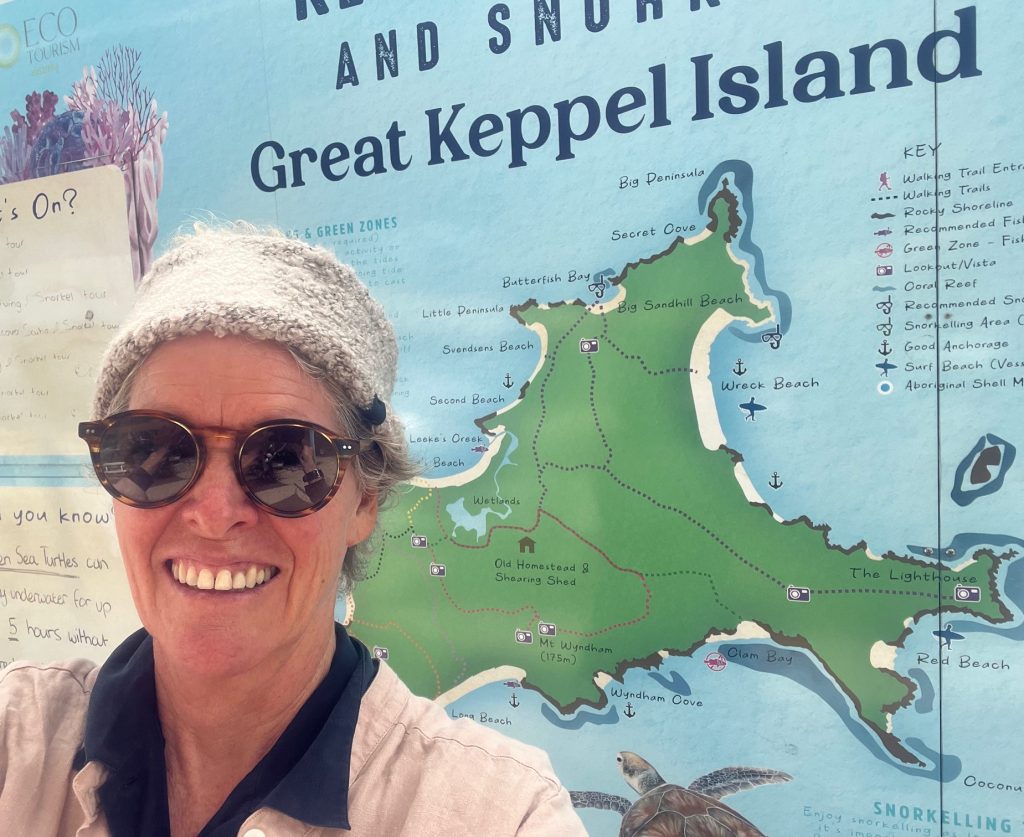
According to local legends there is gold here, buried somewhere in the sand with a shipwreck, or three.
I found gold by way of a nudibranch, specifically Chromodoris kuiteri.
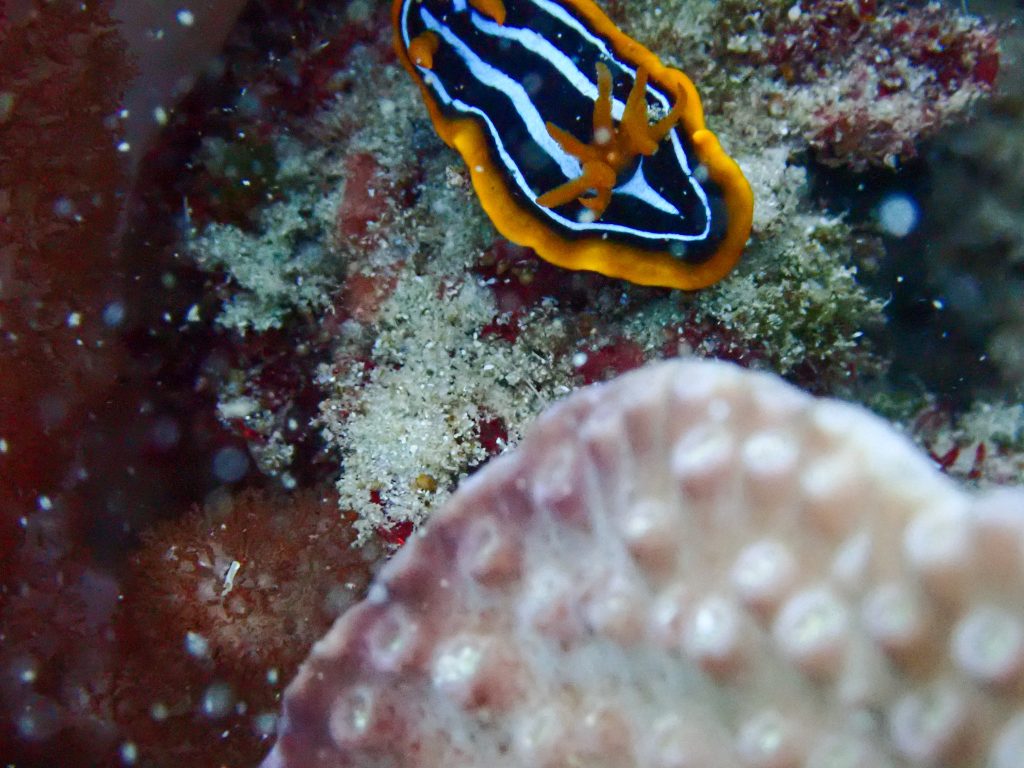
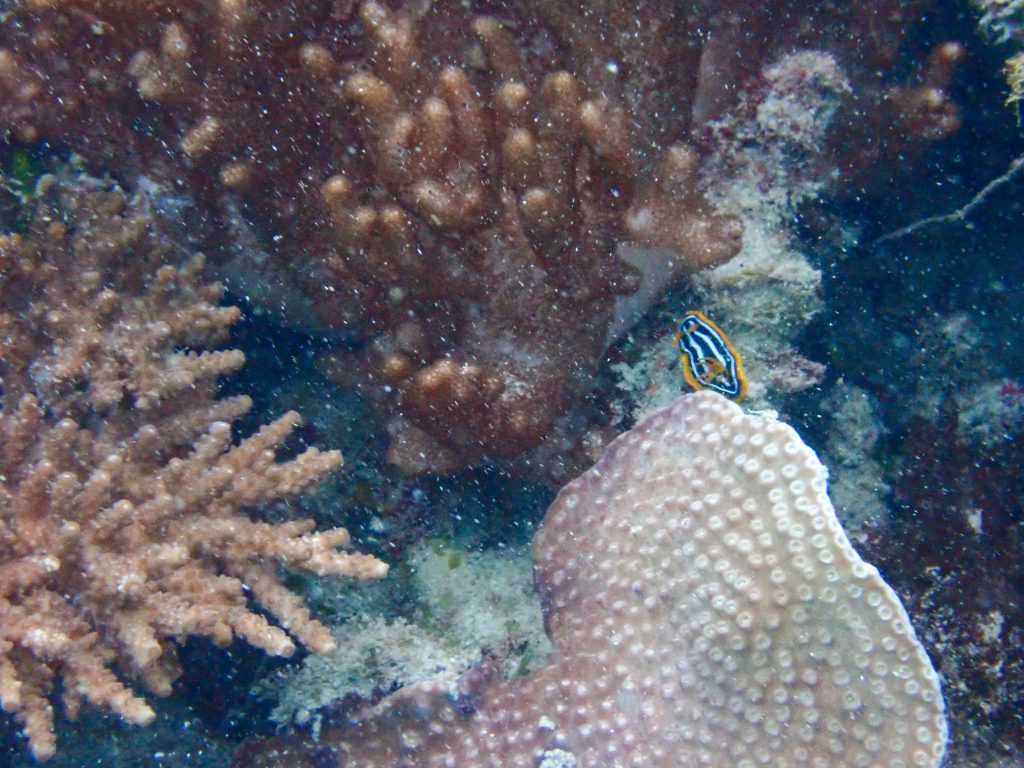
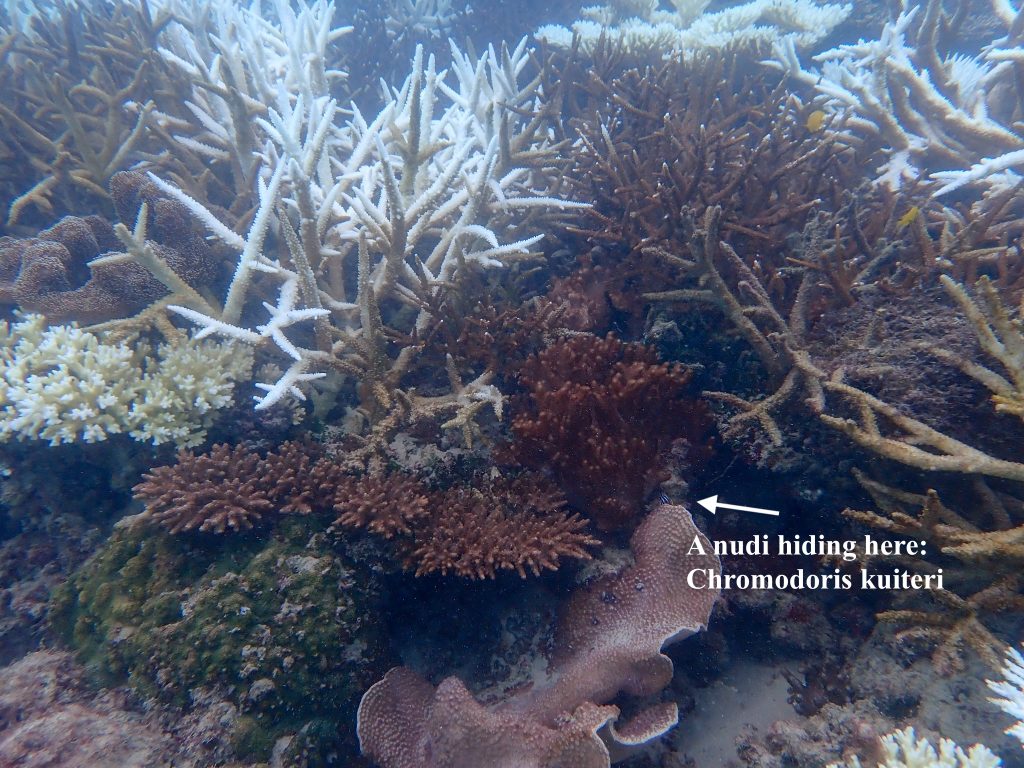
Most striking when you drop down to the reef at the northern end of the bay is all the bleaching. It is everywhere at the reefs fringing this island.
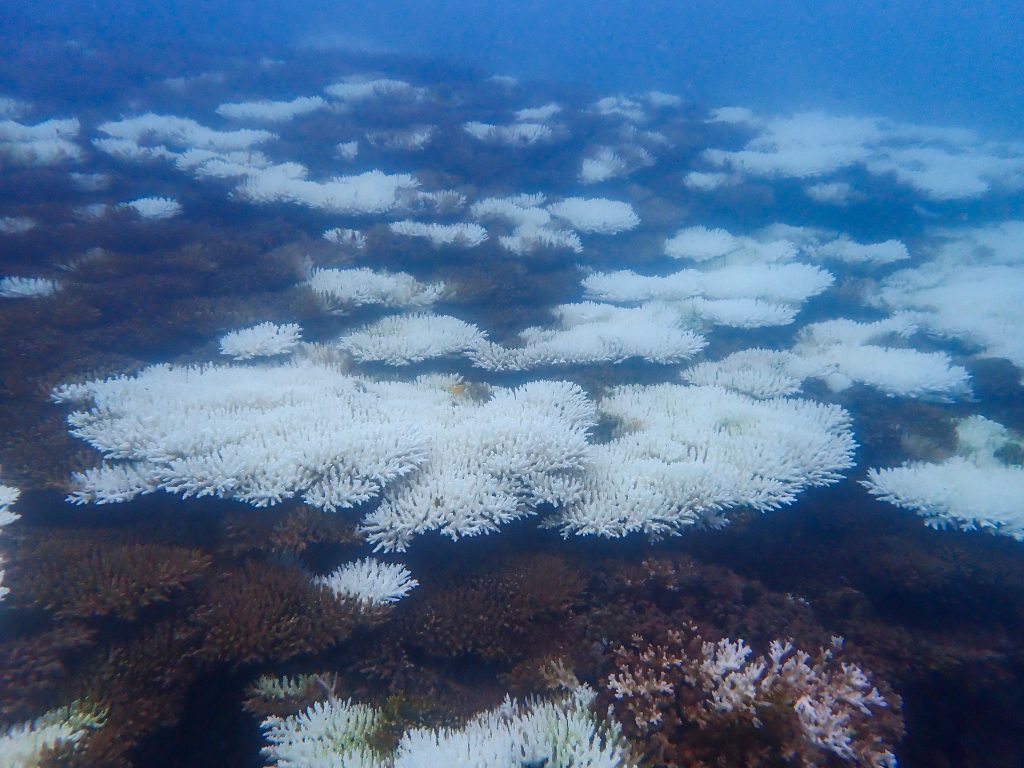
What is not bleached seems to be a particularly dark chocolate brown: it seems much of the coral either has no zooxanthellae or too much.


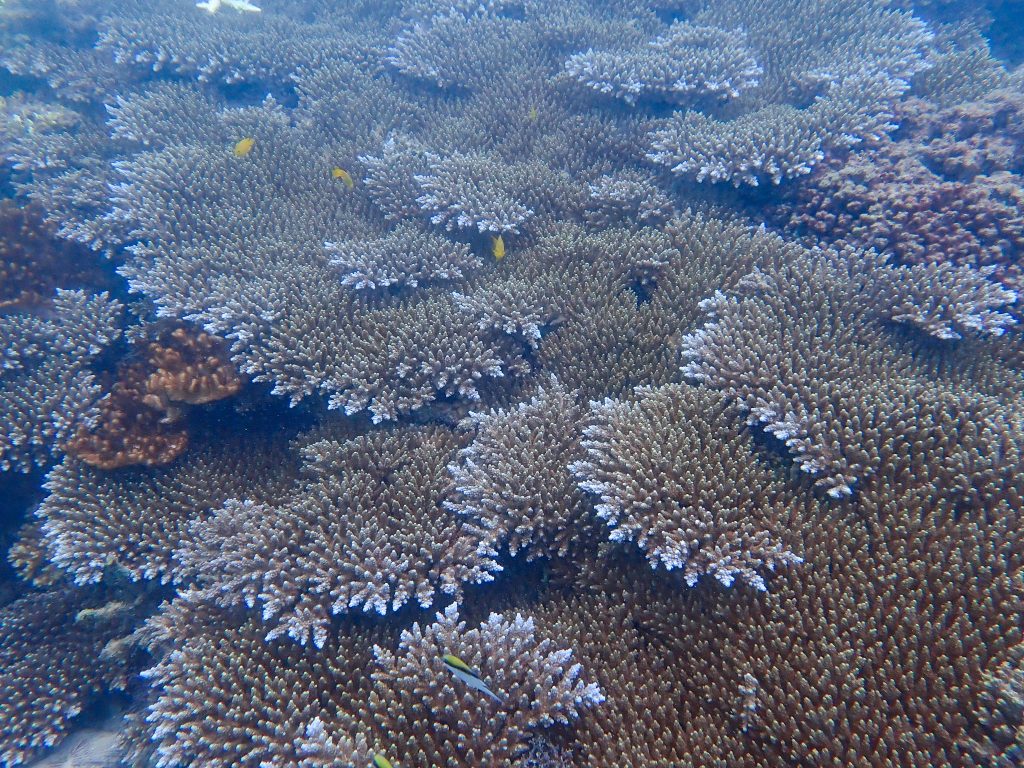
Can someone explain to me how this works, how does the zooxanthellae become toxic to the coral when the water becomes too warm? What is the physical mechanism?
I’m told that it is not a case of the zooxanthellae dying insitu, rather the coral polyps kick them out.




 Jennifer Marohasy BSc PhD is a critical thinker with expertise in the scientific method.
Jennifer Marohasy BSc PhD is a critical thinker with expertise in the scientific method.

(Nielsen, Petrou, & Gates, 2018).
In this case its because of something called photo-oxidative stress.
Excess heat and light damage the photosynthetic machinery in Symbiodinium.
Usually the algae would produce usable oxygen for the coral to put into cell respiration. Under photo-oxidative stress, a toxic form of oxygen called reactive oxygen species (ROS) leaks out of the algae and into the host cells, causing damage.
The coral expels the Symbiodinium to try and protect itself from this oxygen which is toxic to the polyps.
However this breakdown of the well known symbiotic relationship is not exclusively from raised temperatures/light – something I’ve been banging on about for years.
https://www.jstage.jst.go.jp/article/galaxea/15/2/15_29/_pdf
Moderate Thermal Stress Causes Active and Immediate Expulsion of Photosynthetically Damaged Zooxanthellae (Symbiodinium) from Corals
Lisa Fujise, Hiroshi Yamashita, Go Suzuki, Kengo Sasaki, Lawrence M Liao, Kazuhiko Koike
PLoS One 9 (12), e114321, 2014
The foundation of coral reef biology is the symbiosis between corals and zooxanthellae (dinoflagellate genus Symbiodinium). Recently, coral bleaching, which often results in mass mortality of corals and the collapse of coral reef ecosystems, has become an important issue around the world as coral reefs decrease in number year after year. To understand the mechanisms underlying coral bleaching, we maintained two species of scleractinian corals (Acroporidae) in aquaria under non-thermal stress (27°C) and moderate thermal stress conditions (30°C), and we compared the numbers and conditions of the expelled Symbiodinium from these corals. Under non-thermal stress conditions corals actively expel a degraded form of Symbiodinium, which are thought to be digested by their host coral. This response was also observed at 30°C. However, while the expulsion rates of Symbiodinium cells remained constant, the proportion of degraded cells significantly increased at 30°C. This result indicates that corals more actively digest and expel damaged Symbiodinium under thermal stress conditions, likely as a mechanism for coping with environmental change. However, the increase in digested Symbiodinium expulsion under thermal stress may not fully keep up with accumulation of the damaged cells. There are more photosynthetically damaged Symbiodinium upon prolonged exposure to thermal stress, and corals release them without digestion to prevent their accumulation. This response may be an adaptive strategy to moderate stress to ensure survival, but the accumulation of damaged Symbiodinium, which causes subsequent coral deterioration, may occur when the response cannot cope with the magnitude or duration of environmental stress, and this might be a possible mechanism underlying coral bleaching during prolonged moderate thermal stress.
The fish is a slatey bream/painted sweetlip/blackall/mother in law fish.
The name depends on where you live.
Kevin,
Jennifer asked,
“Can someone explain to me how this works, how does the zooxanthellae become toxic to the coral when the water become too warm? Why is the physical mechanism?
I’m told that it is not a case of the zooxanthellae dying insitu, rather the coral polyps kick them out.”
I’m sure she knows the rest.
Good technical comments Dave and kev. I repeat my previous queries:
1 Why aren’t the Pacific Islands suffering ocean heat stress:
http://www.bom.gov.au/oceanography/projects/spslcmp/data/monthly.shtml
2 If close by areas of the Pacific, as above, are not heat stressed, what is happening around the GBR to cause that localised heating?
3 Since CO2 radiation, IFR, cannot heat the oceans, if the GBR waters are anomalously heating, what is causing it?
“Australia’s iconic Great Barrier Reef is experiencing its fifth mass bleaching event in eight years — and this one is the worst on record. A report by the Australian government’s reef management agency analysed aerial surveys of 1,080 of the reef’s estimated 3,000 individual reefs, and some in-water surveys. Corals ‘bleach’ when stressed by warming waters brought on by climate change, expelling their colourful resident zooxanthellae. Marine biologist Terry Hughes says the solution to the bleaching problem is clear: “Reduce greenhouse gas emissions. Full stop.”
Nature | 4 min read
https://www.noaa.gov/news-release/noaa-confirms-4th-global-coral-bleaching-event
No kev; Hughes is an activist scientist. Now try and concentrate: CO2 does not warm the ocean, solar radiation does. So if AGW is incorrect, which it is, what is the point of blaming AGW and wasting valuable resources which could be invested in realistic climatic ways.
Incidentally corals bleach for reasons other than heat, such as exposure to air from water level decline:
https://bg.copernicus.org/articles/14/817/2017/
Low sea level seems to be a most likely cause of coral bleaching. With less water over the corals, that would likely lead to more heating of the water. A thin layer of water heats more than a thick layer.
It is well known that when the atomic clock was put in service in 1972 multiple leap seconds were added every decade and the number of leap seconds added every decade decreased, the last leap second was added in 2016 with none since and it is now more likely that the next leap second event may be the first subtraction. This indicates that the earth crust is spinning faster, this indicates sea levels have fallen since 1972. This is a logical explanation for increased coral bleaching.
Coral bleaching may caused by increased excessive solar irradiation, pollution, infection, sedimentation amongst other things, but irradiation of the Reef has not changed in the last year and none of the other causes are occurring on anywhere near the regional scale at which most of the Reef is bleaching.
Exposure to air is also not an explanatory cause, as the sea level along the Reef has been increasing 3-5 mm/year since 1993 – there is no “water level decline” as was suggested by several commenters above:
https://yaleclimateconnections.org/2023/07/how-fast-are-the-seas-rising/
The only factor that is operating to bleach the Reef at the scale and to the degree of severity observed in the current event is ocean warming. The mechanism is well understood, and the event was predicted well in advance of it occurring because the relationship between warming and bleaching is so well characterised. Contrary to suggestions by a commenter above, there is no doubt that the oceans’ temperatures are much warmer than in the past, and this is recognised by marine biologists as the cause for bleaching.
And this bleaching event is widespread around the world, contrary to another suggestion from one of the commenters above:
https://www.noaa.gov/news-release/noaa-confirms-4th-global-coral-bleaching-event#:~:text=Since%20early%202023%2C%20mass%20bleaching,of%20the%20South%20Pacific%20(including
Warming is causing bleaching and despite decades of people here suggesting otherwise, the warming is anthropogenic.
Hi BJ; still slumming and fighting the good fight.
“Warming is causing bleaching and despite decades of people here suggesting otherwise, the warming is anthropogenic.”
No, it’s not. IFR does not penetrate the oceans. Only visible and UV radiation can.
https://www.pnas.org/doi/full/10.1073/pnas.1413640111#:~:text=Surface%20emissivity%20characteristics%20vary%20slowly,on%20the%20radiative%20surface%20temperature.
It’s a difficult paper and not everyone is as brilliant as BJ so here is a primer on what it means:
https://hockeyschtick.blogspot.com/2014/11/new-paper-finds-huge-false-physical.html
This AGW falsehood kills AGW stone dead.
“Scientists have identified [in 2014] a mechanism that could turn out to be a big contributor to warming in the Arctic region and melting sea ice.
The research was led by scientists from the US Department of Energy’s Lawrence Berkeley National Laboratory (Berkeley Lab). They studied a long-wavelength region of the electromagnetic spectrum called far infrared.
…
The simulations revealed that far-infrared surface emissions have the biggest impact on the climates of arid high-latitude and high-altitude regions.
In the Arctic, the simulations found that open oceans hold more far-infrared energy than sea ice, resulting in warmer oceans, melting sea ice, and a 2-degree Celsius increase in the polar climate after only a 25-year run.”
https://newscenter.lbl.gov/2014/11/03/far-infrared-arctic/
Ok kev but how does the IFR get into the oceans?
The minimum ice level in the Arctic was 1974:
http://www.ipcc.ch/ipccreports/far/wg_I/ipcc_far_wg_I_full_report.pdf
The IPCC used this graph:
https://i0.wp.com/realclimate.science/wp-content/uploads/2013/06/screenhunter_170-jun-15-11-10.jpg
The Arctic has got warmer due to the Arctic Amplification which it is primarily driven by albedo feedbacks caused by changes in snow and ice on land and loss of the Arctic sea ice. This is natural:
https://www.nature.com/articles/nature13260#affil-auth
Oh I forgot kev: the oceans are NOT getting warmer:
https://www.sciencedirect.com/science/article/abs/pii/S0277379116304802
This graph from the above paper shows OHC has dropped markedly over the last 10000 years
https://notrickszone.com/wp-content/uploads/2016/12/Holocene-Cooling-Western-Pacific-Warm-Pool-OHC-2.jpg
Hi Con, real scientist talk about SST.
Real scientists predicted the bleaching Jen has just observed, over 4 months ago.
I’ve met a few real scientists; I like them; they’ve always got a bunsen burner in their white jacket pockets. Climate scientists on the other hand could not predict a sunrise.
Anyway, I’ll re-phrase the issue: how does the IFR get past the sea surface and increase BOTH SST and OHC.
Con, I see your special skill is in strawman arguments. Read all of the appended article and do your best to understand. It should be easy to find through Google Scholar. You know about Google Scholar right?
Solar activity cause and effect of climate variability and their various impacts
RK Mishra, SC Dubey
British Journal of Multidisciplinary and Advanced Studies 4 (2), 21-38, 2023
This paper addresses the Solar Activity cause and effect of climate change and their various impacts. Earth’s climate is determined by complex interactions among the Sun, oceans, atmosphere, cryosphere, land surface and biosphere. The Sun is the principal driving force for Earth’s weather and climate. The Sun’s energy is distributed unevenly on Earth’s surface due to the tilt of Earth’s axis of rotation. Over the course of a year, the angle of rotation results in equatorial areas receiving more solar energy than those near the poles. As a result, the tropical oceans and land masses absorb a great deal more heat than the other regions of Earth. The atmosphere and oceans act together to redistribute this heat.
Sounds exciting kev; in 25 snide sesquipedalisms explain how it explains how CO2 IFR gets into the ocean.
https://jennifermarohasy.com/2024/04/more-ocean-temperature-data-more-diving-this-weekend-great-keppel-island/
Notice how Jen presents a graph for Rosslyn Bay that shows a distinct rise in sea level.
Also note the graphs of Rosslyn Bay water temperatures, which Jen presents and claims show no global warming, but the most basic trend line clearly shows warming of minimum, mean and maximum temperatures.
********
Thanks Adam. If you consider the longer trends, beyond the last 60 years, you will see falling before the rising. There are cycles within cycles. Try and see the seasonal cycles, for the moment. :-).
Full time, Final score, Kev -1, real science 3
MattK, given that Jen is again busy blocking and deleting posts that don’t fit her fossil-fuelled narrative… it would seem so.
******
Thanks Brian. No blocking or deleting except that which is defamatory or repetitive. Cheers,
Come on briany, help kev out: tell us how CO2 IFR gets into the oceans.
Brian and Kev would tell you go back to school, but Jen’s “AI checking” has blocked their posts, apparently because they are defamatory or repetitive. Enjoy your conservative echo chamber.
https://adstandards.com.au/wp-content/uploads/2024/04/Final-Case-Report-0032-24.pdf